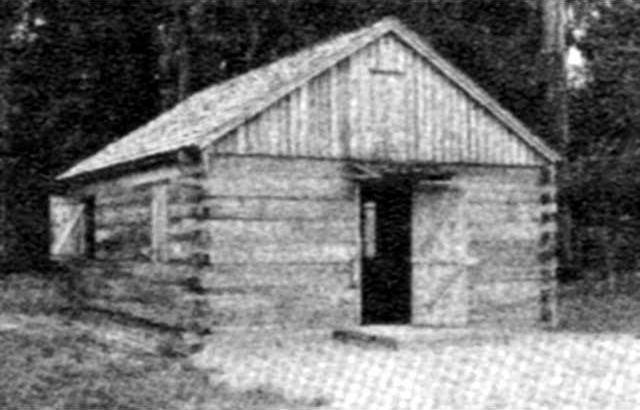Tuckaseeking, on the Savannah River near what is now Clyo, was formerly a village of the Uchee Indians. It is the only settlement in Georgia that still carries an original Indian name, according to the “Bicentennial History of Effingham County.”
Tuckaseeking was selected as the first county seat of Effingham County by the state Legislature when they first established county seats in 1784. It is not clear how long it remained but records still show it was in existence as late as 1788. It was moved to Elbertson, a settlement on the Ogeechee River. A commission in 1797 purchased 100 acres of land and established Springfield as the county seat.
Even before Tuckaseeking became the county seat, it was a thriving community. In the fall of 1759, 10 families known as “Seventh Day Baptists” came from Virginia and settled at Tuckaseeking. There was a strong Baptist population in several locations in South Carolina. They were not popular with the other settlers because of their religion. They met in various homes under the leadership of the Rev. John Clayton.
By 1763, this group who had earned a living by gathering honey and beeswax and by hunting deer and other animals for fur, had all died or gone elsewhere. Apparently they joined efforts and collectively earned their livelihood. They observed the Sabbath on Saturday and worked on Sunday.
According to “River to River: The History of Effingham County,” several of them were killed by neighbors who sought opportunities to “hurt them as enemies of God.” They never had a church building.
Another group of Baptists assembled at the Bethesda Orphanage in Savannah. They observed the Sabbath on Sunday. Mr. Nicolas Bedgegood, an ordained minister of the Charleston Baptist Church, had baptized a number of people.
Benjamin Stirk was among those baptized. In 1767, he moved to Newington and began preaching. He then moved to Tuckaseeking and preached in the home of the widow Anne Bell. Mr. Stirk and his little congregation were constituted into an arm of the Euhaw Baptist Church in South Carolina. The church group grew and needed a church building. In 1769, John Hall gave them three acres of land and they built a meeting house measuring 26 by 20 feet.
Mr. Stirk, the first minister, died in 1770 at the age of 94. He is generally accepted as the first Baptist pastor in Georgia. Mr. Edmund Botsford succeeded him. Accompanied by Rev. Francis Pelote, pastor of the Euhaw church, he preached his first sermon at Tuckaseeking on June 27, 1771. He continued the work begun by Mr. Stirk and preached throughout the region. He preached a sermon at the Salzburger settlement in Ebenezer in 1771. They were hesitant to let him speak because he had so many converts from other churches. However, the sermon apparently was accepted well.
Botsford remained at Tuckaseeking only a year. He began missionary work along the Savannah River and the adjoining area. In the spring of 1779, he was forced to flee Georgia as a fugitive from the Tories during the Revolutionary War.
In November 1959, several members of the First Baptist Church of Sylvania visited the site of the Tuckaseeking Baptist Church on the banks of the Savannah River. Mr. R.V. Wilson, the minister of education, cut down a little maple tree and Mr. Frank Herrington turned it into a gavel. It was presented to the Georgia Baptist Convention on Nov. 11, 1959, with the compliments of the First Baptist Church of Sylvania.
In 1976, Dr. Darnell Brawner, a Savannah physician, built a replica of the original church in honor of the U.S. bicentennial. The building was built of primitive frontier construction, with no glass or fireplace. (See the accompanying photo.) The floor was packed clay and the roof was constructed of hand-split cedar shakes. The pine boards would have been hand-hewn.
The site of this little replica church sat just north of the current Tuckaseeking dock and public boat ramp. It was on a very high river bluff. Vandals eventually destroyed the building. The only thing on the church site today is a small fenced cemetery.
In recent years, the boat landing on the river and dock along with parking areas on the river were dedicated, on Sept. 12, 2011. The dedication also included a nice children’s park that sits in the shade along with a parking lot on the high bluff above the river near the public landing.
Those who enjoy the park today probably have no idea that the first Baptist church in Georgia was nearby and prior to that Indians lived here and trapped and traded for their livelihood along a series of footpaths from one Indian village to the next.
This was compiled by Susan Exley of Historic Effingham Society. Information came from “The Bicentennial History of Effingham County” and “River to River: The History of Effingham County.” If you have photos, comments or information to share, contact Susan Exley at 754-6681 or email her at: susanexley@historiceffinghamsociety.org.








